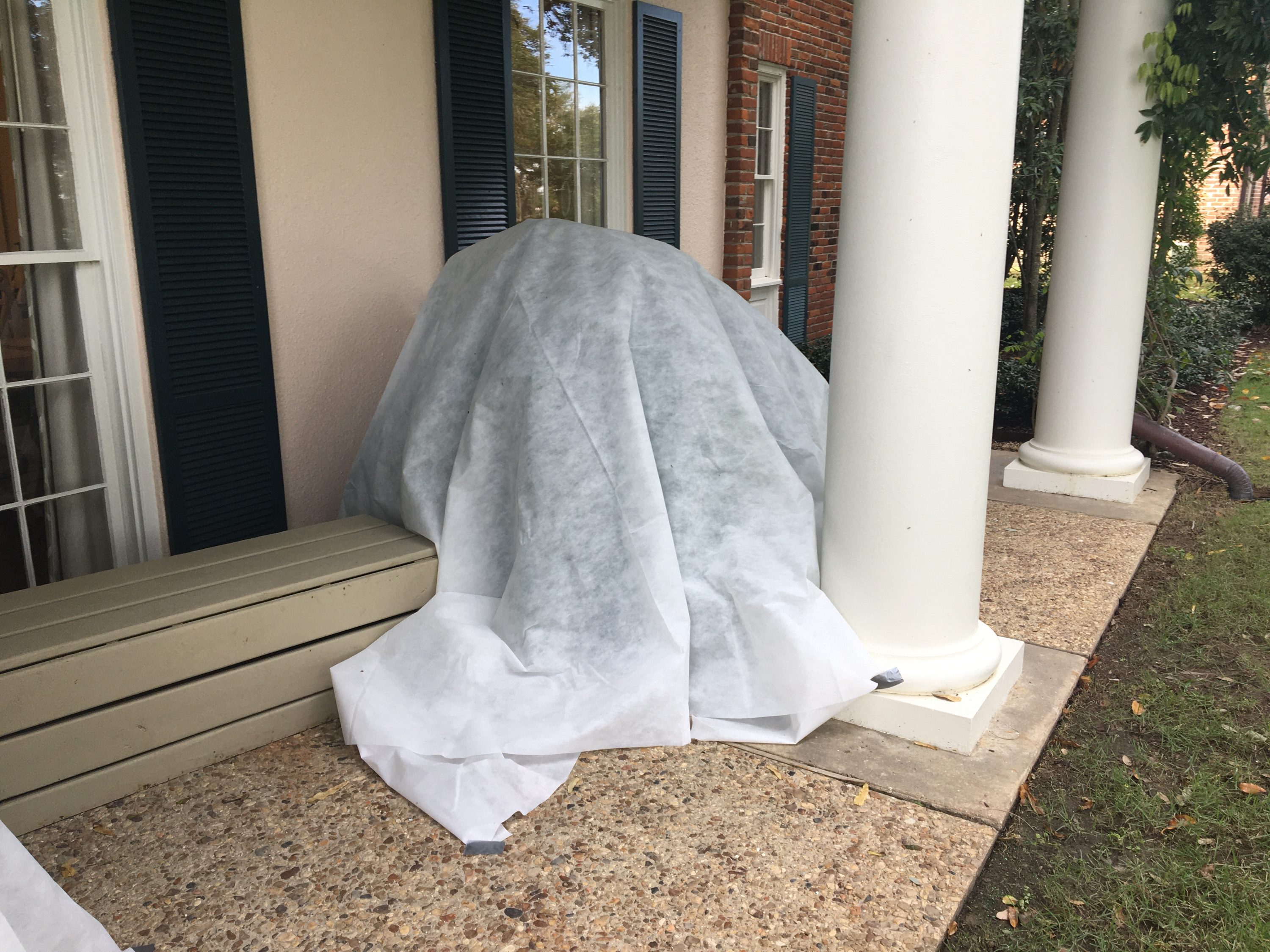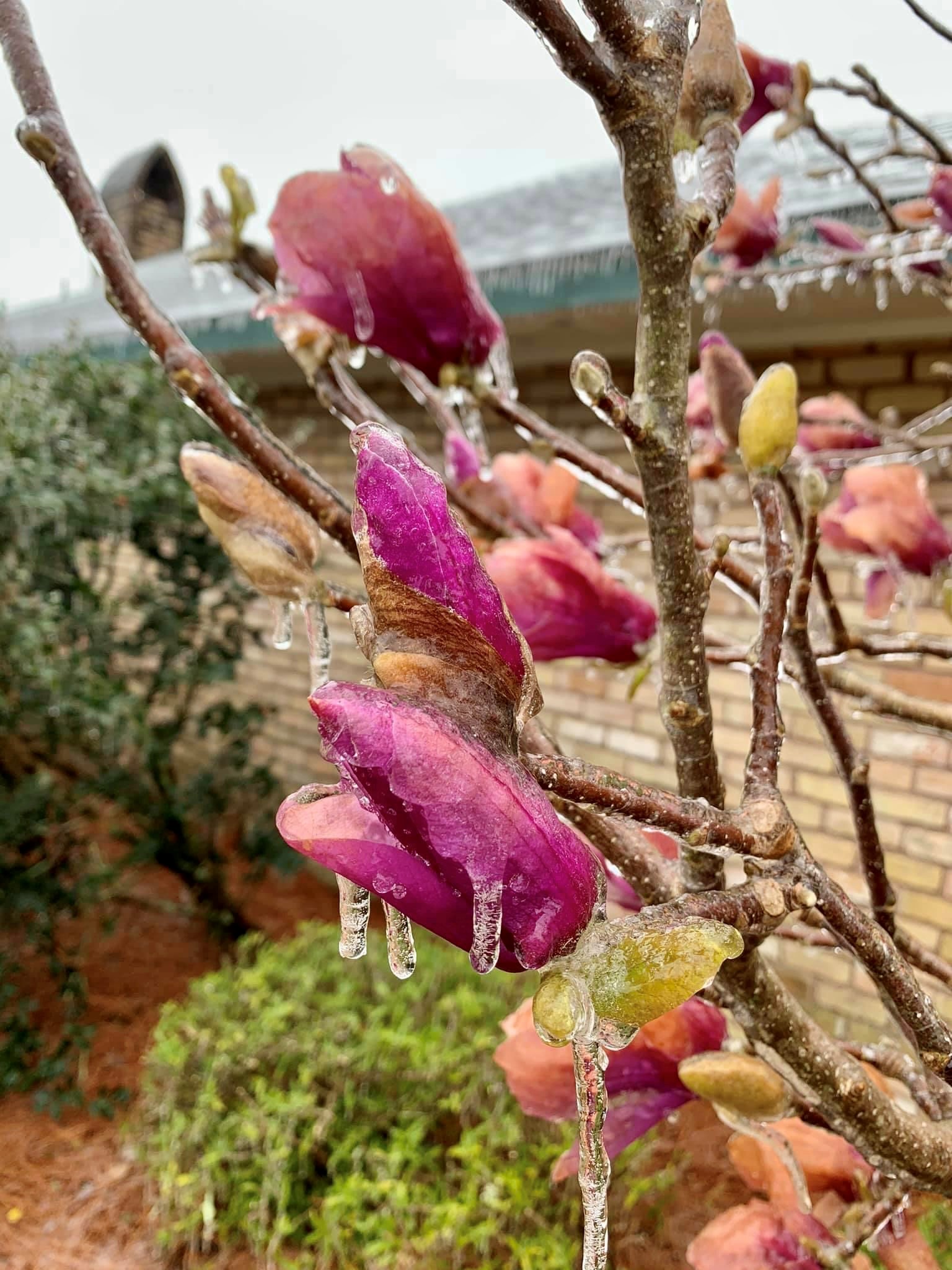
Bayou Community Foundation Celebrates Completion of First New Home Built in “Rebuild South Lafourche” Hurricane Ida Housing Recovery Program
January 19, 2024
Girl Scouts Louisiana East to Kick Off 2024 Girl Scout Cookie Season on January 19
January 19, 2024By Heather Kirk-Ballard LSU AgCenter Horticulturist
When winter weather forecasts call for freezing temperatures, it’s crucial to take proactive steps to safeguard both your home and plants from the impending cold snap.
Protecting your plants during freezes is crucial, particularly for sensitive and tropical varieties that are more susceptible to damage or even death. To protect your in-ground plants, consider using blankets, burlap or frost cloth as effective covers. Ensure the cover extends to the ground, forming a protective barrier that traps heat radiating up from the soil towards the canopy of the plant.

Cover sensitive plants to protect them from freezing temperatures. Photo by Heather Kirk-Ballard/LSU AgCenter
Plastic sheets also can be employed, but caution must be exercised to avoid direct contact with the foliage, which can lead to damage if temperatures plummet too low. For smaller trees, especially citrus, use tall stakes to create a teepee formation and drape plastic down to the ground, securing it with a heavy object. This method helps insulate the plants while preventing potential harm to the foliage.
Keep this in mind for citrus: temperatures 28 degrees Fahrenheit or lower for more than four hours will damage trees. Cover citrus during the daytime to trap radiant heat emitted from the soil.
Introduce outdoor heat sources such as incandescent Christmas lights or frost-free plant heating cables under the covering to provide an additional layer of warmth. Avoid using heat sources that pose a fire hazard.
While protective coverings like sheets and cloths can be left on for a few days without causing harm, they should not be left for extended periods because they can impede photosynthesis.
Prep your plants by thoroughly watering the soil before the expected freeze. Moist soil retains heat more effectively than dry soil, providing an added layer of protection for the plant’s roots. Exercise caution not to overwater, as standing water can lead to its own set of issues.
Mulching is another effective practice for landscape beds to protect the roots and rhizomes of tropical plants and insulate the soil from extreme cold. Apply a generous, 4-to-6-inch layer of mulch around the base of the plants, which will help maintain a stable soil temperature.
For potted tropical and cold-sensitive plants, bring them indoors, into a garage, carport or a protected patio corner when temperatures drop into the 30s. Adjust watering frequency accordingly to prevent fungal diseases and insect damage.

Frozen blooms of Japanese magnolias will become mushy when ice thaws. LSU AgCenter file photo
If plants are indoors where photosynthesis has slowed due to lower light conditions, water once a week or when the plants begin to wilt slightly. This helps to reduce chances of fungal disease and insect damage. Fungus gnats love rotting roots that have succumb to saturated potting soils growing fungus. Avoid this by letting the soil dry out before watering again.
After it warms back up, you can prune off freeze-damaged limbs and foliage on herbaceous plants like gingers and philodendrons.
Stay informed about upcoming weather conditions and take preemptive measures for freezing temperatures that are expected. Remember, plant needs can vary, so consider the type of plant and the severity of the freeze when implementing protective measures. Even with precautions, extreme cold can still cause damage, and some plants may not survive severe freezes.








